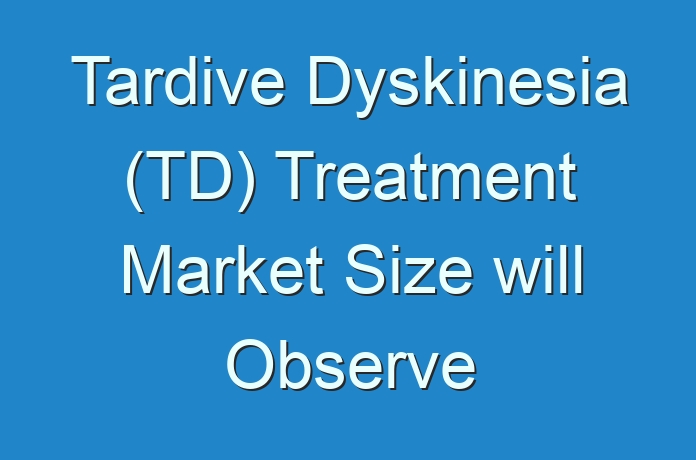
Tardive dyskinesia (TD) is a disorder caused by a prolonged use of antipsychotic drugs by patients suffering from schizophrenia and other neuroleptic disorders. It is characterized by involuntary and uncontrolled movements of body parts such as eyeballs, lips, and tongue. Although tardive dyskinesia commonly occurs in patients who have been treated with antipsychotic medication for long periods, it also occurs occasionally in other conditions such as fetal alcohol syndrome, developmental disabilities, and other brain disorders, even after receiving 1 dose of causative agent. However, there are new atypical antipsychotic agents, such as olanzapine and risperidone, which have lesser risk of developing tardive dyskinesia. The disorder is linked with polymorphism of dopamine receptor gene types. The commonly used antipsychotic agents that are associated with tardive dyskinesia are chlorpromazine (Thorazine), fluphenazine (Prolixin), haloperidol (Haldol), thioridazine (Mellaril), and trifluoperazine (Stelazine). The risk of developing tardive dyskinesia is higher in older patients, women, and African & African-American population receiving antipsychotic treatment. It is estimated that approximately 500,000 people in the U.S. are affected by tardive dyskinesia each year. Increasing incidences of schizophrenia, growing bipolar disorder patients, and increasing antipsychotic prescriptions are driving the tardive dyskinesia treatment market. However, side effects of drugs, lack of awareness about the disorder and its medication, and undiagnosed cases are restricting the market growth.
Request Brochure –
https://www.transparencymarketresearch.com/sample/sample.php?flag=B&rep_id=28283
The global tardive dyskinesia treatment market can be segmented based on type of disorder, drug class, and region. Based on the type of disorder, the market can be segmented as bradykinesias and hyperkinesias. Bradykinesias involves slowing of motion and difficulty in starting any action whereas hyperkinesias is characterized by akathisia, chorea, dystonia, myoclonus, stereotypy, tic, and tremor. Based on drug class, the market is segmented as dopamine-depleting medications (e.g., tetrabenazine, reserpine, and amantadine), GABA receptor agonist medications (e.g., clonazepam, baclofen, and valproic acid), and anticholinergic medications (e.g., trihexyphenidyl). In 2017, the FDA approved valbenazine (Ingrezza) for the treatment of adults with tardive dyskinesia. Ingrezza is manufactured by Neurocrine Biosciences, Inc, which is the first approved therapy for the treatment of the disorder. In addition, a variety of medicines are used for the treatment of tardive dyskinesia such as clonidine; however, dose limiting hypotension and sedation are its restraining factors.
Request COVID Analysis on Tardive Dyskinesia (TD) Treatment Market –
https://www.transparencymarketresearch.com/sample/sample.php?flag=covid19&rep_id=28283
Botox injections are tried for minor dystonia. Vitamin B6, vitamin E, and branched chain amino acids are reported to be helpful to minimize the symptoms of the disorder. Benzodiazepine (clonazepam) is an effective therapy for tardive dyskinesia, however the development of tolerance is limiting its market growth. TEVA’s Austedo was approved for the treatment of chorea associated with Huntington’s disease; however, it is also filed for the new indication, which is for the treatment of tardive dyskinesia. Austedo is likely to create competition for Neurocrine Biosciences’ Ingrezza.
Geographically, the tardive dyskinesia treatment market is distributed over North America, Europe, Latin America, Asia Pacific, and Middle East & Africa. North America is leading the market due to high prevalence of schizophrenia, increasing health awareness, and growing research and development investment. Middle East & Africa is the second largest market after the U.S., followed by Europe. The market in Asia Pacific is expected to grow with a decent pace during the forecast period due to increasing health awareness and growing number of schizophrenic, bipolar, and other neuroleptic disorder patients.
Pre Book Tardive Dyskinesia (TD) Treatment Market Report –
https://www.transparencymarketresearch.com/checkout.php?rep_id=28283<ype=S
Key players operating in this market are Neurocrine Biosciences, Teva Pharmaceutical Industries, Valeant Pharmaceuticals, Sterimax Inc, Sun Pharma Global FZE, Pharmascience Inc., Eon Labs, Inc., Novopharm Limited, Novartis, and Oceanside Pharmaceuticals.
About Us
Transparency Market Research is a global market intelligence company, providing global business information reports and services. Our exclusive blend of quantitative forecasting and trends analysis provides forward-looking insight for thousands of decision makers. Our experienced team of Analysts, Researchers, and Consultants, use proprietary data sources and various tools and techniques to gather, and analyze information.
Our data repository is continuously updated and revised by a team of research experts, so that it always reflects the latest trends and information. With a broad research and analysis capability, Transparency Market Research employs rigorous primary and secondary research techniques in developing distinctive data sets and research material for business reports.
Contact
Transparency Market Research,
90 Sate Street, Suite 700,
Albany, NY 12207
Tel: +1-518-618-1030
USA – Canada Toll Free: 866-552-3453
Email: sales@transparencymarketresearch.com
Website: https://www.transparencymarketresearch.com





